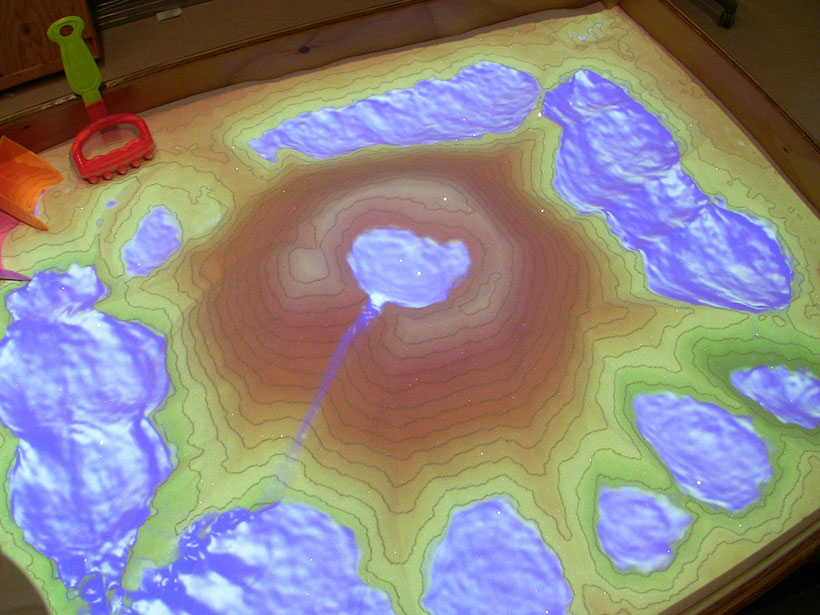Superimposing responsive digital effects onto sand in a sandbox places educators, students, and policy makers in an augmented reality, offering a hands-on way to explore geoscience processes.

Superimposing responsive digital effects onto sand in a sandbox places educators, students, and policy makers in an augmented reality, offering a hands-on way to explore geoscience processes.